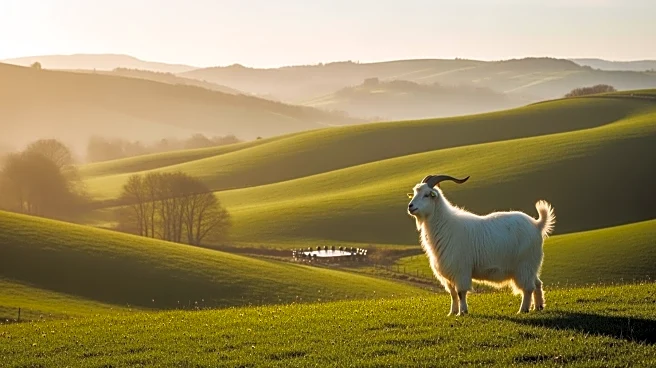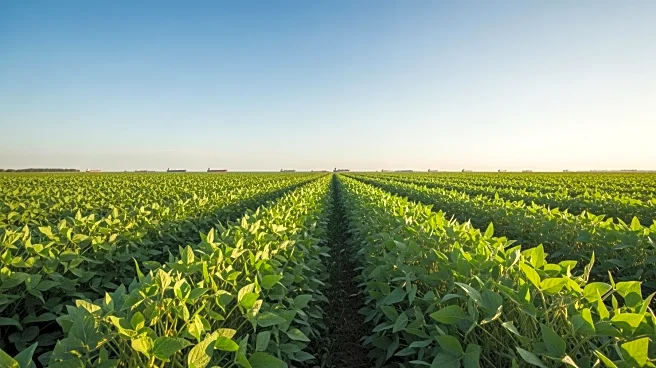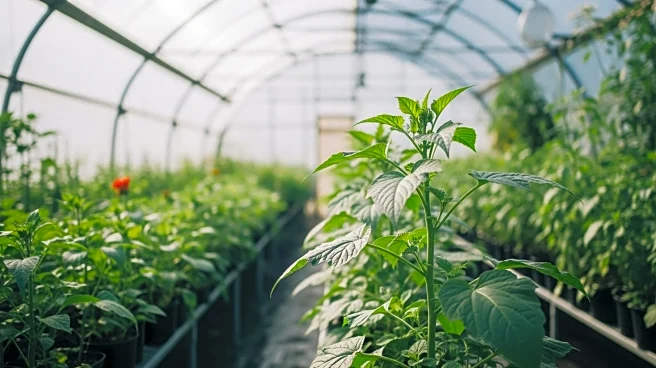What's Happening?
Beth Bohnert, a farmer in Tennessee, is raising goats specifically for cashmere production. Unlike sheep, cashmere goats are not sheared; instead, their luxurious down is collected by brushing once a year.
This process yields a small amount of cashmere, requiring four goats to produce enough fiber for a single adult sweater annually. The cashmere industry is highly specialized, with only two labs in the United States testing the fibers to ensure they meet the stringent specifications for cashmere. The goats' diet plays a crucial role in the quality of the cashmere, as high protein intake can coarsen the fibers.
Why It's Important?
Cashmere is a highly sought-after material due to its softness and luxury, making it a valuable commodity in the fashion industry. The farming of cashmere goats presents both opportunities and challenges for farmers, as the production process is labor-intensive and requires specific conditions to maintain fiber quality. The demand for cashmere continues to grow, offering potential economic benefits for farmers who can successfully navigate the complexities of cashmere production. This niche market also highlights the importance of sustainable farming practices and animal welfare in the textile industry.
Beyond the Headlines
The cashmere industry faces ethical considerations regarding animal treatment and environmental impact. As consumers become more conscious of sustainability, there is increasing pressure on producers to adopt eco-friendly practices and ensure humane treatment of animals. Innovations in farming techniques and fiber processing may offer solutions to these challenges, promoting a more sustainable and ethical cashmere industry.













